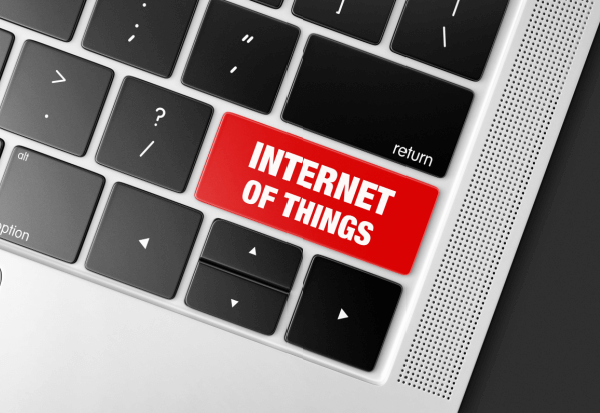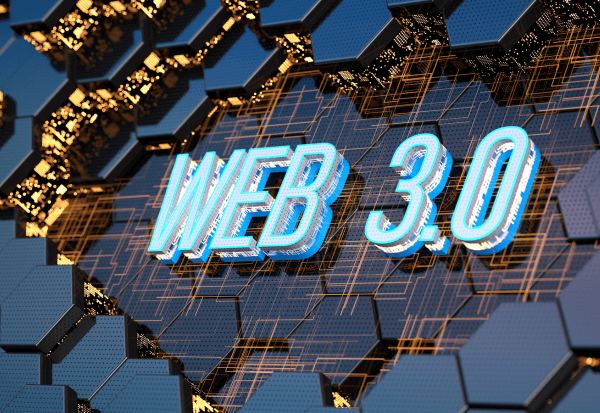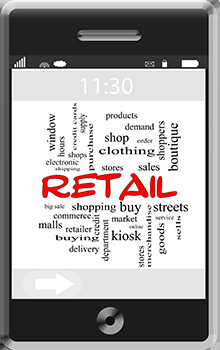The Internet of Things (IoT) is a term that portrays the increasingly sophisticated ecosystems of online, connected devices we share our world with. The somewhat odd name alludes to the fact that the first iteration of the internet was simply a network of interconnected computers. As the internet grew, phones, office apparatus like printers and scanners, and industrial machinery were added to the internet. In fact, Ericsson predicts that by 2022, there will be around 29 billion of these devices connected to the internet globally.1
IoT is a trend driving the continuous digitization and datafication of society in many new and unique ways. Self-driving vehicles, autonomous manufacturing robots, and remote medical devices that let doctors diagnose patients and even carry out the surgery are all possible due to these networks of connected things. According to Fortune Business Insights, the IoT market is forecast to grow at a 25.4 percent CAGR rate, zooming from $381 billion in 2021 to $1.8 trillion in 2028.2
So, let’s take a look at what are likely to be some of the most important trends in IoT during 2022:
Edge AI and Computing
Edge computing platforms are software and hardware that enable a zero-touch, secure, distributed computing architecture for applications and data processing at or near the edge. As a result, it can enhance performance and keep the operating costs down. Edge AI can also assist AI in overcoming the technological challenges associated with it. The edge computing market size is expected to grow from USD 36.5 billion in 2021 to USD 87.3 billion by 2026, at a Compound Annual Growth Rate (CAGR) of 19.0% during the forecast period.3 5G, AI & Automation is driving the adoption of Edge Computing.
IT/OT/ET Convergence
In 2011, Gartner prompted (IT) leaders to prepare for their organizations’ change to the converging, aligning, and integrating of IT, OT, and ET environments. Today it is the foundation of Industry 4.0, the industrial Internet, cyber-physical systems, and evolutions in areas and markets such as building management systems, smart metering, and critical power. By 2022, strategic partnerships will be formed between 40% of market-leading IT and OT vendors to deliver a holistic solution, reducing integration and deployment costs by 20%.4 By 2024, 70% of industrial organizations will run software-defined compute and network infrastructure for supporting IT, OT, and CT functions at the operational edge.5 And by 2025, 60% of G2000 customers with OT infrastructure will partner with services vendors to leverage their global infrastructure and experience related to engineering and digital deployments.6
Enhancing Cyber security
Today, the number of devices connected to the internet is more than the number of people on this planet. What’s more, this number will undoubtedly rise dramatically in the coming year. In a complex network of connected devices, every other device it communicates faces potential vulnerability if one device is compromised. Security researchers at Kaspersky say there were 1.5 billion attacks against IoT devices during the first half of 2021 – and in 2022, it’s inevitable we will see this trend accelerate.7 But developments are being made; in September 2021, AWS announced the launch of AWS IoT Device Defender. The Audit One-Click feature allows customers to turn on an AWS IoT Device Defender audit with preset configurations, enabling all available audit checks and a daily audit schedule. The global IoT Security Market size to grow from USD 14.9 billion in 2021 to USD 40.3 billion by 2026, at a Compound Annual Growth Rate (CAGR) of 22.1% during the forecast period.8
IoT Enabled Applications
Internet of Things (IoT) applications are becoming more widespread as IoT enables various business applications. Knowing those IoT examples and use cases can assist businesses in integrating IoT technologies into their future investment decisions. Here are some top IoT use cases in various industries, for instance, in the industry and the manufacturing sector, the leading cases are operations management, increased yield, predictive maintenance, in healthcare sector its remote Health and monitoring, tracking staff, patients & critical hardware, in energy and utility sector its fleet management, operations management, and digital worker, in the retail industry the self-checkout, real-time personalized promotions, supply chain management and in the smart space sector the operations management, improved equipment maintenance, and energy management are some of the cases thriving.
Digital Twin
The digital twin can play a critical part in developing 6G network from 5G services by enabling users to explore and monitor the real world without any spatial constraint. Industries have started adopting digital twin technology to enhance asset performance and ROI with the help of remote operations and production assurance. IoT and IIoT will drive digital twin adoption rate in Industry 4.0. The global digital twin market size was valued at USD 3.1 billion in 2020 and is projected to reach USD 48.2 billion by 2026. It is expected to grow at a CAGR of 58.0% during the forecast period.9
Blockchain and IoT
Blockchain is a distributed ledger technology that merges with IoT to make machine-to-machine transactions achievable. It uses a set of transactions that are recorded in a database, verified by multiple sources, and entered in a common ledger distributed across every node. The blockchain-powered by decentralized architecture and cryptographic encryptions leverages the IoT platform by ensuring privacy and security in a peer-to-peer network. Blockchain technologies provide security protocols and infrastructure that enable billions of IoT devices to have trusted interoperability for both data and commerce. The blockchain IoT market is expected to register a CAGR of 40% over the forecast period, 2021 – 2026.10 Some of the key use cases in blockchain are Supply chain management, attaining traceability of production, energy trading platform, and improving efficiency with automated planning.
Sustainability
“In 2022, demand for sustainability-related services powered by edge and IoT will grow for energy efficiency and resource management,” Forrester said. The global Green Technology and Sustainability market size to grow from USD 11.2 billion in 2020 to USD 36.6 billion by 2025, at a Compound Annual Growth Rate (CAGR) of 26.6% during the forecast period.11 The increasing awareness associated with environmental concerns and expanding consumer and industrial interest in using clean energy resources are driving the adoption of green technology and sustainability solutions and services in the market. Products that use IoT and edge computing to help reduce scope 3 emissions will be brought to market in 2022. Companies are starting to invest in carbon, energy and E-waste management, onsite renewable energy generation, smart lighting, and sustainability management software.
Even though its origins date back to 1999, IoT is getting a lot of attention from various industries and is getting applied in almost every aspect of a business to use to its full potential to improve the quality, customer experience, cut down costs, to be at total efficiency. As the number of IoT devices grows, newer and more resourceful ways to leverage them will be devised.
References
1(Source: Ericsson Mobility Report)
2(Source: Fortune Business Insights November 2021)
3 (Source: IoT Analytics, 2020)
4,5,6(Source: IDC 2021)
7(Source: Kaspersky)
8(Source: Markets and Markets)
9(Source: Markets and Markets)
10(Source: Mordor intelligence)
11(Source: Markets and Markets)

is Chief Technology Officer (CTO) for Digital Business Services and also heads the IoT CoE at Happiest Minds. He has over 24 years of extensive technical and management experience. His expertise and interest lies in building niche global technology products across multiple areas like Multimedia and Communication technologies, Broadband modem, Set-top Box, Triple play Gateway, IoT, Complex Hardware and Portable components across multiple platforms, etc.








